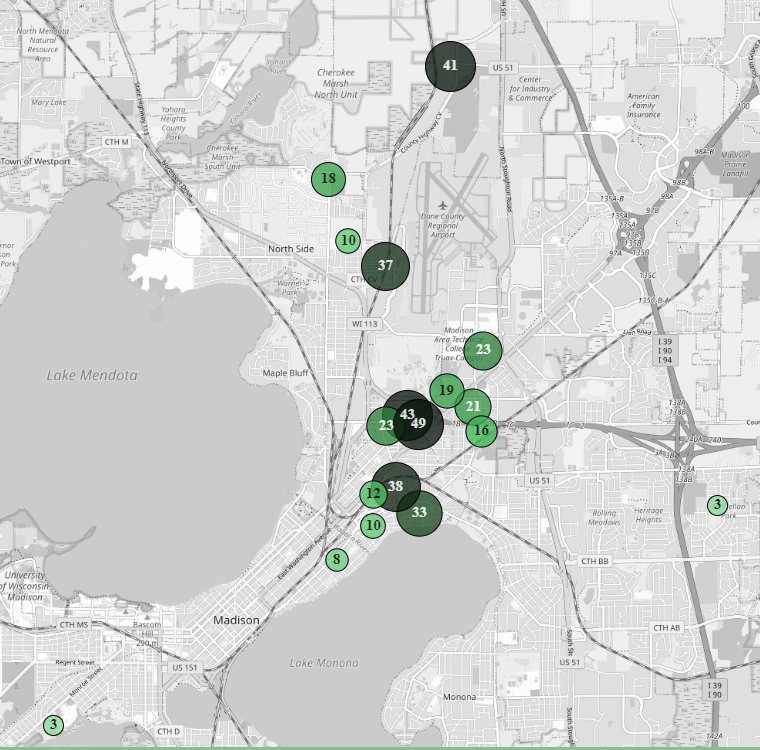
This page provides a high-level overview of aircraft noise in neighborhoods around the Dane County Regional Airport (DCRA), with a special focus on fighter-jet noise before and after the arrival of F-35 aircraft for the local 115th Fighter Wing of the Wisconsin Air National Guard. The information presented here derives from hundreds of thousands of civilian and military aircraft noise events identified from data that has been collected by the MSNSound noise monitoring network since May 2021.
To be counted here, an individual aircraft noise event must peak at 65 decibels or higher (55 dB at night) and rise to at least 10 decibels above the general level of background noise at the time. On average, neighborhoods near the airport see about 10 to 50 such aircraft noise events per day, for a total of 5 to 30 daily minutes of aircraft noise. The number of noise events and minutes of noise is highest along a narrow corridor aligned with the main runway where arriving commercial airliners tend to follow a nearly identical approach path.
In contrast, neighborhoods to the east and west of the airport experience about three aircraft noise events per day and about two daily minutes of aircraft noise.

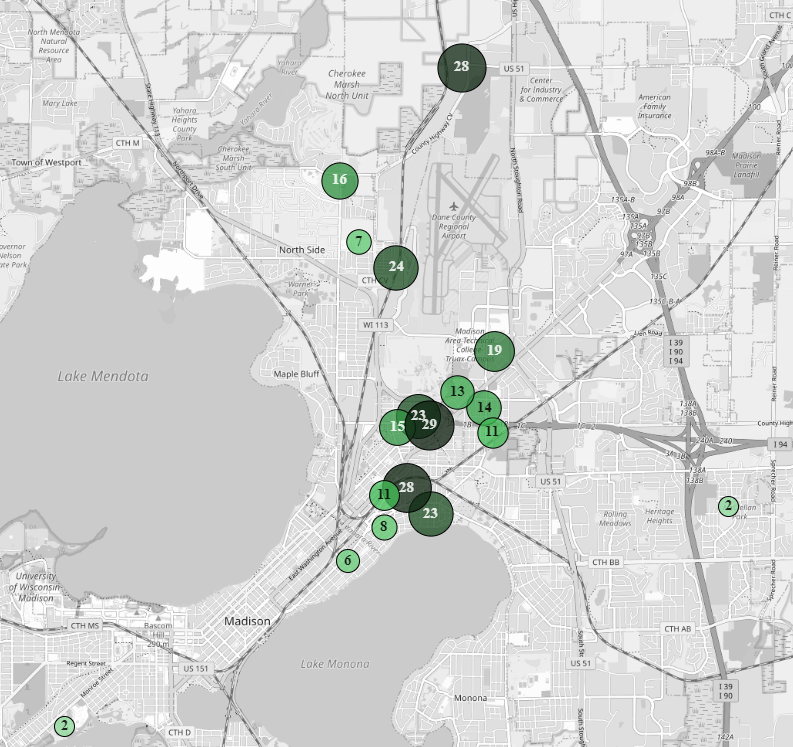
The airport sees a wide variety of civilian and military air traffic, but commercial airliners dominate the aircraft operations that result in a noise event at one or more meters in the monitoring network. Fighter jets are only a small proportion of the flights that result in detectable noise — though (as shown below) they are much louder than all other aircraft.

Because of controversy around the decision to deploy F-35 fighters in Madison, fighter-jet noise is of special interest. Before October 2022, the 115th operated F-16C fighters out of Truax Field (the military side of the DCRA). Starting in late April 2023, the 115th began operating F-35A fighters. Between these two deployment periods, the 115th maintained only a small "readiness" contingent of F-16 fighters. However, a small number of fighter jets from other areas regularly visit Truax Field for refueling and other purposes.

Since the arrival of the F-35s, neighborhoods near the airport have averaged between about 10 and 20 fighter-jet noise events per week, or 10 to 30 weekly minutes of fighter-jet noise.
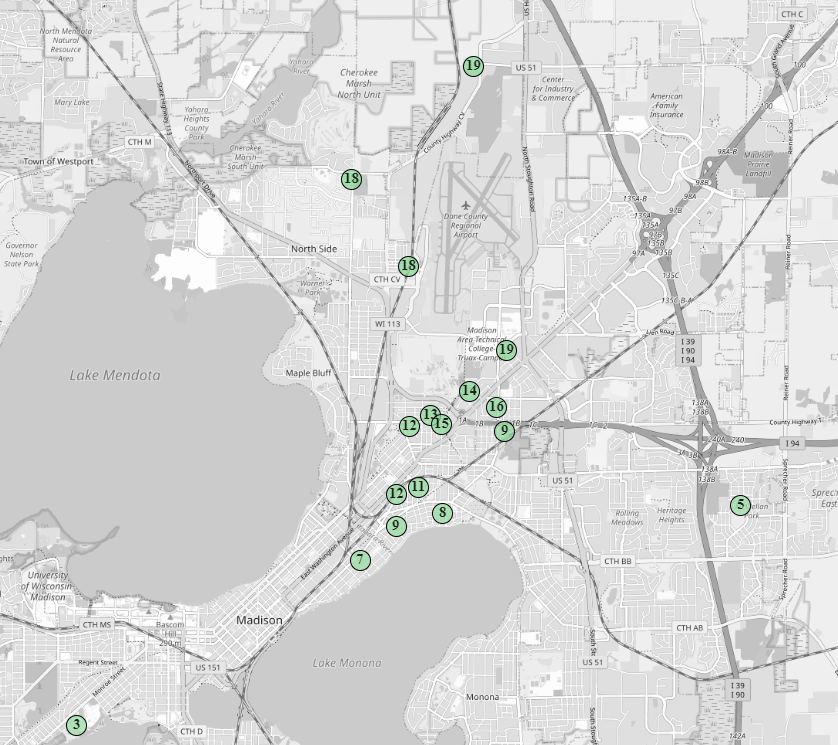
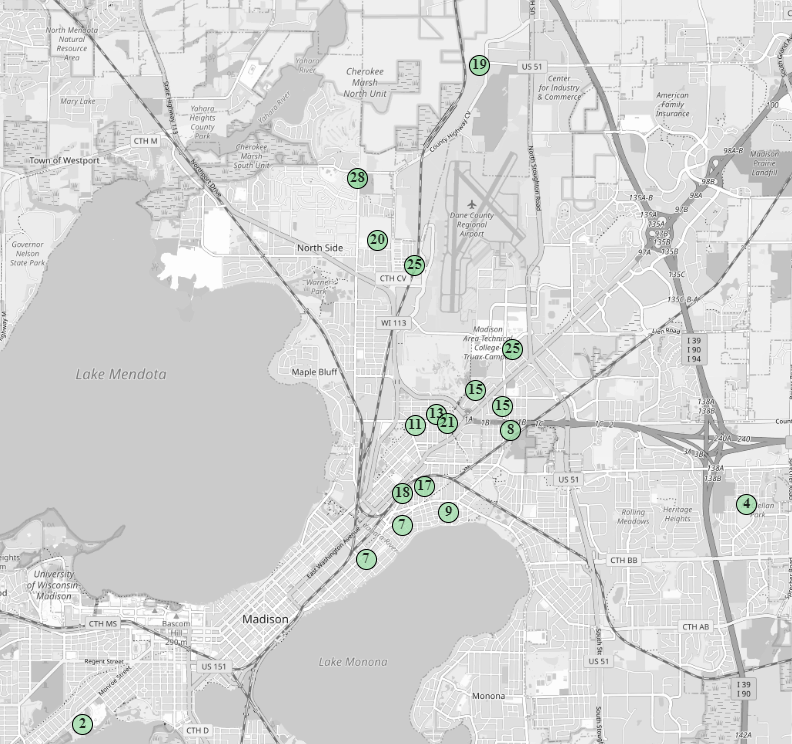
Noise can be characterized in many ways. The focus here is on peak decibel levels, peak "loudness" and acoustic energy (see Sound and Noise Basics).
Decibels are a logarithmic representation of the magnitude of sound pressure waves.[1] Decibel levels from a passing aircraft typically build to a peak level as the aircraft approaches, then fade back to background noise levels as the aircraft recedes into the distance. Data for many thousands of identifieid civilian and military aircraft noise events show that fighter jets are by far the loudest aircraft in Madison area, with recorded peak levels of up to 120 decibels. Fighter jets account for more than 90 percent of the aircraft noise events that exceed 90 decibels, and they make up about 85 percent of the recorded readings that exceed 100 decibels from any noise source.
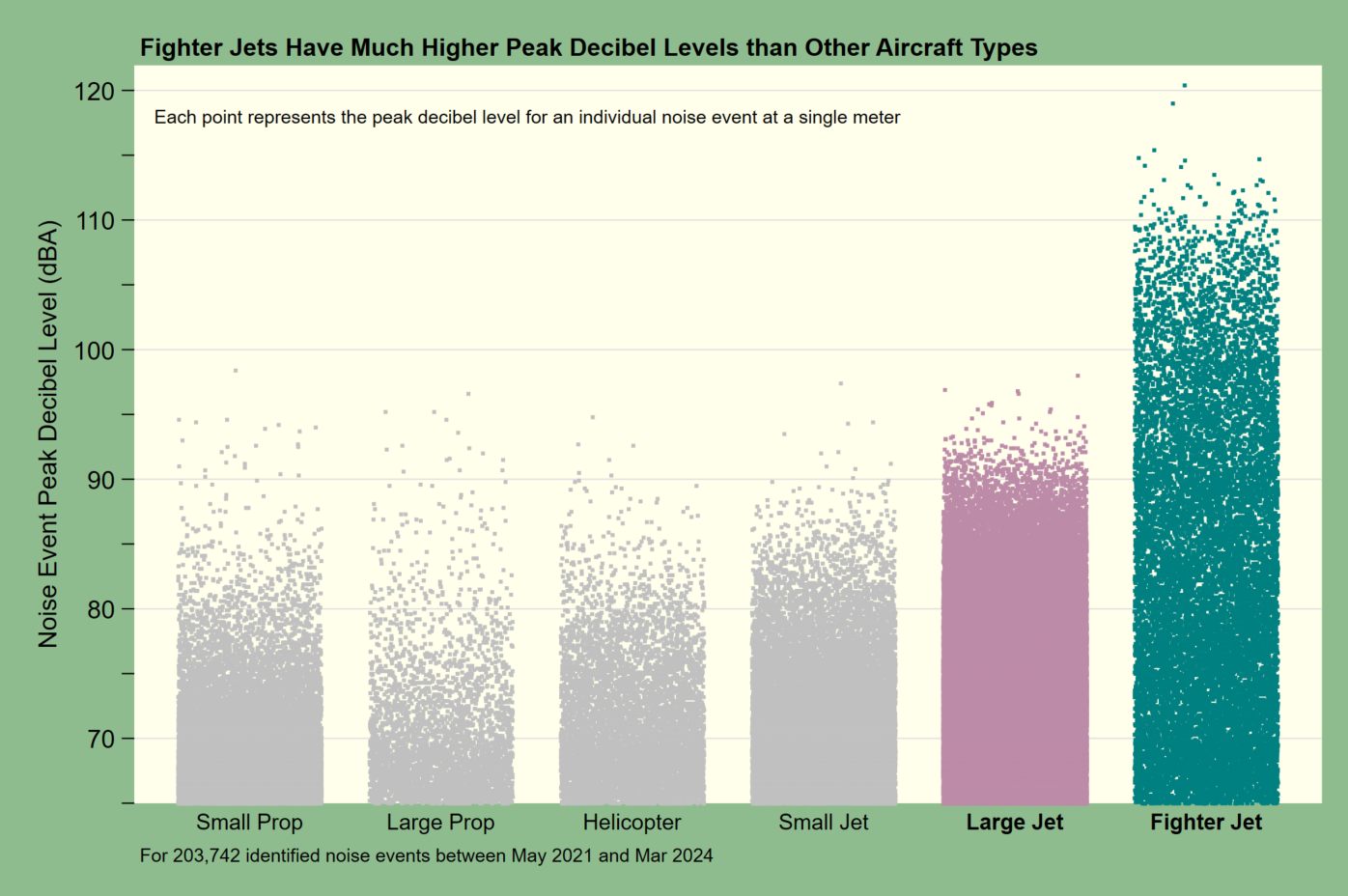
Loudness is a subjective interpretation of noise levels, but studies have shown that perceived loudness generally doubles for each 10-decibel increase in noise level. Noise at 60 decibels is thus perceived as twice as loud as 50 decibels, 70 decibels four times louder, 80 decibels eight times louder, and so on.
Traffic noise and other ambient sources create a background noise level (typically 40 to 50 decibels) against which peak aircraft noise can be gauged. The monitoring data show that fighter jets can be 50 to 100 times louder than the the everyday background noises of the city. Other aircraft rarely exceed even 25 times ambient background noise levels.
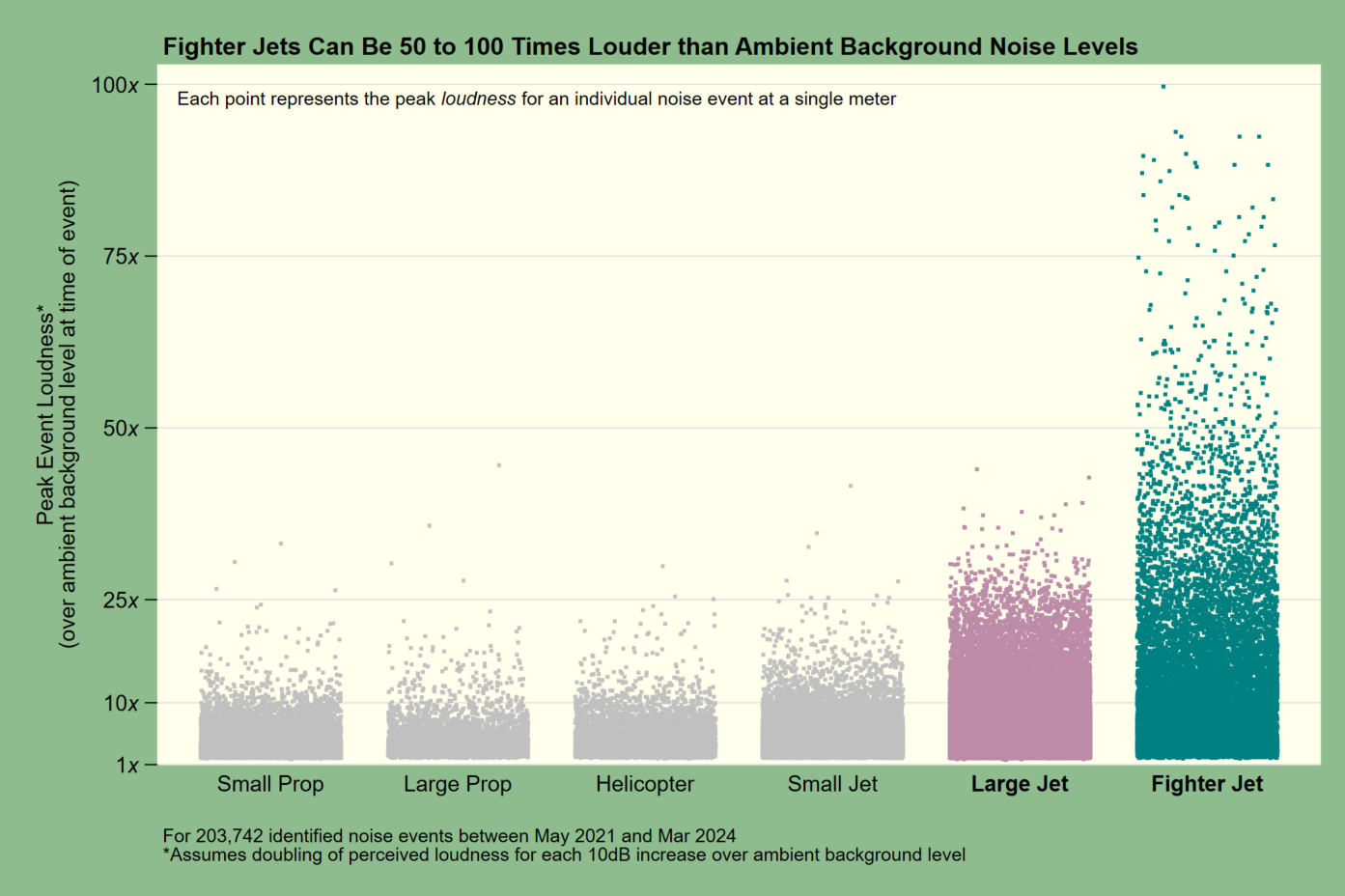
Acoustic energy is a somewhat technical measure of noise that might not be worth mentioning here were it not for the fact that it is the measure by which the federal government characterizes noise and sets policy related to acceptable noise levels and noise mitigation. This includes the recent Noise Exposure Map prepared for the DCRA, which maps estimated Day Night Average Sound Levels (DNL), an acoustic-energy based measure of noise levels.[2]
The most important aspect of acoustic energy is that it increases by a factor of 10 for every 10-decibel increase in noise level. Noise at 100 decibels thus has a milion times more acoustic energy than noise at 40 decibels. (Noise duration plays a lesser role: a noise event that lasts twice as long as another event with the same decibel level has two times the acoustic energy.)
Because of the high decibel levels produced, fighter jet noise thus has far higher acoustic energy than other aircraft types. For similar flight paths, the MSNSound monitoring data show that the average fighter-jet departure event has about the same acoustic energy as 200 commercial airliner departures. A very loud fighter-jet noise event can result in the acoustic energy equivalent of several thousand commercial airliner departures.
Confusingly, acoustic energy for intermittent noise sources such as aircraft is typically represented as the decibel level of a continuous noise that would generate the same acoustic energy in a given period of time. For example, the MSNSound data indicate that three daily fighter jet departures or 600 commercial airliner departures have about the same acoustic energy as a constant 60 dB noise source—about that of a continuously running nearby air-conditioner. Few would consider these three scenarios to be the same experientially, however.

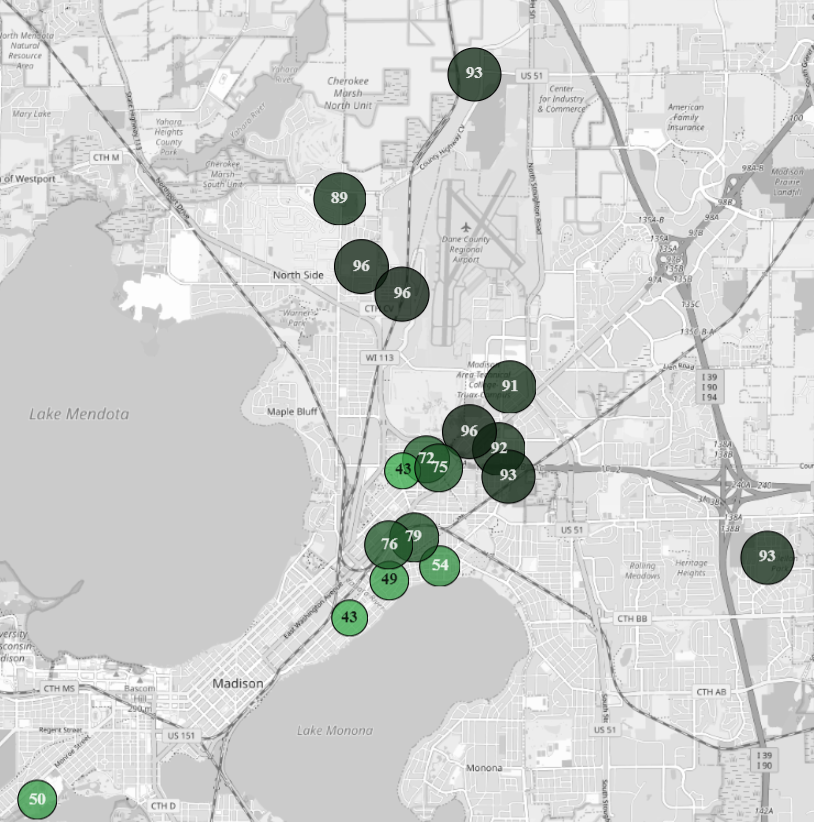
Eight noise meters in the MSNSound network have sufficient data to allow for comparing noise levels before and after the arrival of the F-35s.[3]:
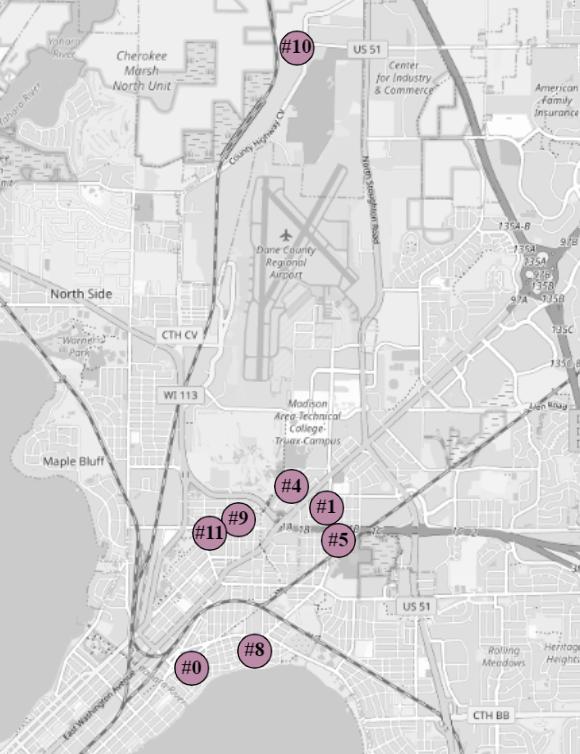
The analysis shows that noise from fighter-jet departures lasts about 30 percent longer on average since the arrival of the F-35s:

Peak decibel levels for fighter jets average a few decibels higher in the F-35 period at most metering locations:

Because loudness doubles for every 10dB in increase in peak decibel levels, these peak-decibel changes translate into about 40 percent increase in peak loudness since the arrival of the F-35s:

Total fighter-jet acoustic energy averages about 60 percent higher in the F-35 period, but there are substantial differences among the individual noise meters:
